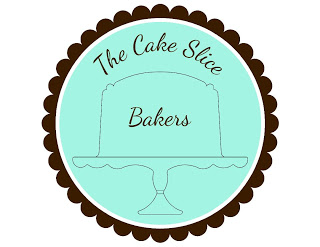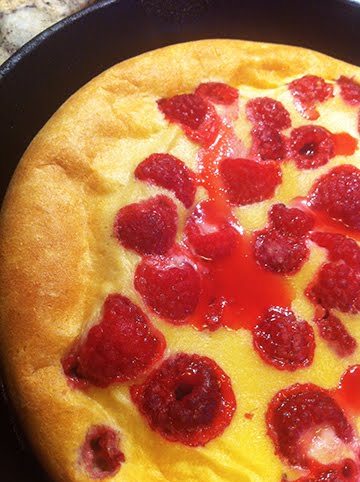My favorite neighbor ordered a super sized bag of Sir Lancelot flour from King Arthur Flours. Since the smaller sizes of flour were out of stock, he figured that we could share and we did. He is most generous. This particular bread flour has wheat flour, unbleached, but also barley flour. It's a great bread flour, so I wanted to make bread as soon as he brought the bag over and left it on the porch.
He made bagels. I made fougasse, a leaf shaped bread that is a bit like focaccia. My original plan had been to knead in some chopped walnuts in half the bread dough, and knead in chopped mixed herbs into the other half of the dough, but I ended up just using a pastry brush to brush the top of each lightly with olive oil and then sprinkling on chopped fresh rosemary and then a sprinkle of coarse sea salt. Sweetie loved it that way!
This recipe makes four leaves, each about 10 inches on a side. Since the shape is a rough triangle, that gives you some idea of the size. I baked mine on parchment which was set on 12-inch pizza pans and that worked very well. You can also shape on parchment on a larger pan. You can shape it on parchment on a pizza peel, or, by adding some cornmeal under the dough to allow the dough to roll onto a pizza stone, shape it right on the peel. If not using a pan, bake on a preheated pizza stone.
I gave one loaf to a favorite relative for his birthday, and one loaf to the neighbor who gave me the lovely bread flour. Sweetie and I ate most of the first one on the day it was made, as part of our dinner. Our second one was baked four or five days later and enjoyed with a meal, too. Although this bread is delicious all by itself, it is also great dipped into a mixture of olive oil and good balsamic vinegar. Sort of gilding the lily, but so good.
You can bake the four loaves over time, or bake them all at once. I was using my toaster oven, so each baked by itself and two during each baking session seems right, but if you are using a full oven you may be able to bake all four at once. Just be sure to switch the pans out halfway through baking time...putting those on the top rack down and moving those on the lower rack up.
It's been pretty hot here for the last few days, so no baking going on at the moment, but I did enjoy local strawberries for the first time for breakfast. Stay safe and healthy dear reader.
Fougasse with Rosemary and Sea Salt
Preferment:
Preferment:
1/4 teaspoon active dry yeast
2 cups lukewarm water (not hot), divided
2 cups bread flour, divided
Mix together 1/4 teaspoon active dry yeast, 1 cup lukewarm water and 1 cup bread flour in a bowl. Cover lightly and let sit for 1 hour. Add an additional 1 cup lukewarm water and and additional cup bread flour and mix until all new ingredients are incorporated. Let sit for at least an hour for flavor (or refrigerate overnight, then bring to room temperature).
Dough
all of Preferment
4 tablespoons olive oil, divided
1 cup water, divided
1/4 teaspoon active dry yeast
4 - 5.5 cups unbleached bread flour
2 teaspoons salt
2-3 tablespoons olive oil from brushing
1/4 teaspoon active dry yeast
4 - 5.5 cups unbleached bread flour
2 teaspoons salt
2-3 tablespoons olive oil from brushing
1-2 tablespoons chopped rosemary
1-2 tablespoons sea salt for sprinkling
In the bowl of a stand mixer place the Preferment. Add 3 tablespoons of the olive oil and mix briefly just until the oil is mixed in.
Make sure the water for the dough is lukewarm, not hot. Take 1/4 cup of it and add the dry yeast in a small bowl. Let sit 5 minutes until foamy.
Add the rehydrated yeast, the rest of the warm water, and about half the flour (2 cups) to the mixture in the stand mixer bowl. Mix with the paddle.
Switch to the dough hook. On slow speed add the remaining flour, a half cup or so at a time, adding only a few tablespoons at a time toward the end. The dough will be soft. Add the salt and then knead with the dough hook on low to medium low speed for about 6 minutes, until the dough cleans the sides of the bowl and is smooth. If necessary, add up to an additional cup flour so that dough is soft but firm. Turn kneaded dough out on a lightly floured board or counter and knead a few turn to make sure all flour is incorporated.
In the bowl of a stand mixer place the Preferment. Add 3 tablespoons of the olive oil and mix briefly just until the oil is mixed in.
Make sure the water for the dough is lukewarm, not hot. Take 1/4 cup of it and add the dry yeast in a small bowl. Let sit 5 minutes until foamy.
Add the rehydrated yeast, the rest of the warm water, and about half the flour (2 cups) to the mixture in the stand mixer bowl. Mix with the paddle.
Switch to the dough hook. On slow speed add the remaining flour, a half cup or so at a time, adding only a few tablespoons at a time toward the end. The dough will be soft. Add the salt and then knead with the dough hook on low to medium low speed for about 6 minutes, until the dough cleans the sides of the bowl and is smooth. If necessary, add up to an additional cup flour so that dough is soft but firm. Turn kneaded dough out on a lightly floured board or counter and knead a few turn to make sure all flour is incorporated.
Form the dough into a ball. With the remaining tablespoon olive oil, oil a large bowl and turn the dough ball in the oil to coat. Cover with oiled plastic wrap or a clean shower cap and place in a warm place and let rise until doubled in bulk. This usually takes a couple of hours, but check often. Dough is ready when a finger poked into the dough leave an indent that stays.
Shaping: About an hour before baking the fougasse, punch dough down, and turn the dough out onto a lightly floured board. Knead a few time to get rid of the extra trapped gas, and divide it into four pieces weighing about the same. Take one of the pieces and press it out into a leaf shape. Use your clean hands to press it to about 10-11-inches on a side and about 1/2 - 1-inch high. Wet hands if necessary so that dough doesn't stick. (I shaped it into a tall triangle.)
Place the shaped dough onto a piece of baking parchment which has been placed on a baking sheet. Using a bench scraper or stiff plastic scraper or something similar, cut into the dough to make leaf 'veins' - see photo at top of post. Use your fingers to gently spread out the dough to open up the cuts. Keep the leaf shape. Repeat if desired with the other pieces of dough, making four leaves, or store rest of dough, covered, in fridge, until ready to use.
Cover with lightly oiled plastic wrap, oiled side down, and let rise for about 30 minutes. Leaf will get puffy. If holes close up, gently open them again with your fingers after removing the plastic wrap.
While leaf is rising, preheat the oven to 425 degrees F. If you have a pizza stone, put it in to preheat too.
Use a pastry brush to lightly brush the surface of the leaf with olive oil, then sprinkle with rosemary and sea salt.
Bake in the preheated oven for 15-20 minutes until dark golden brown. Remove from oven, cool a bit on a wire rack after having removed it from pan and parchment. Serve while still warm, breaking off pieces of the leaf, or cutting into portions.
To make focaccia instead of fougasse, follow this link
To make focaccia instead of fougasse, follow this link



























